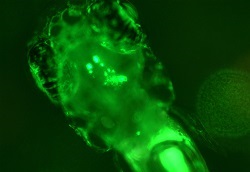Nanocarbon to energy efficient devices
Advanced electronic devices require technologies that provide the beams of electrons. A field emission (or cold) cathode is an example of an electron source, which may be potentially used in vacuum electronic devices like cathodoluminescent lamps and flat panel displays, microwave and X-ray tubes etc. In the search for new cathodes capable of producing a strong electron flux with low energy demands, carbon materials have attracted much attention due to their extraordinary current-carrying capacity. In miniature devices, nanocarbon species are replacing metallic or semiconductor structures requiring expensive microelectronic technologies. Nanocarbon cold cathodes emit electrons when an electric field is applied. Extraordinary enhancement of electron emission is achieved in response to laser pulses illumination. For the EU-funded initiative FANCEE (Fundamentals and applications of nano-carbon electron emitters), scientists looked at how the structure of nanocarbon materials affects electron emission efficiency. This allowed the scientists to develop new materials capable to improve emission properties of the cathodes and performance of the electronic devices. They also produced ultra-thin films made of either graphene or pyrolytic carbon. These can be used for various optoelectronic devices like diodes or solar and photovoltaic cells that operate under control of both light and applied voltage. In addition to graphitic films of various morphology they sythesized a single crystal diamond needle, which can be used as an electron source in advanced electronic and optoelectronic devices. By manipulating the shape of the diamond needle apex, the scientists created a new class of high-performance FE cathodes. Prototypes developed by FANCEE include cathodoluminescent lamps (where light generated by phosphor material excited by an electron beam) and X-ray tubes (where X-ray radiation is resulted of interaction of high energy electrons with metallic anode target). An exciting development is an electron gun for use in an electric solar wind sail (E-sail), a form of spacecraft propulsion. The gun is currently being tested on board ETSCube-1, the world's first E-sail satellite. FANCEE has demonstrated that developed nanocarbon cathodes are far superior to cathodes based on metals or semiconductors. Once commercialised, these cathodes as well as created nanocarbon materials will be useful to industries ranging from electrochemistry to aerospace and automotive.







